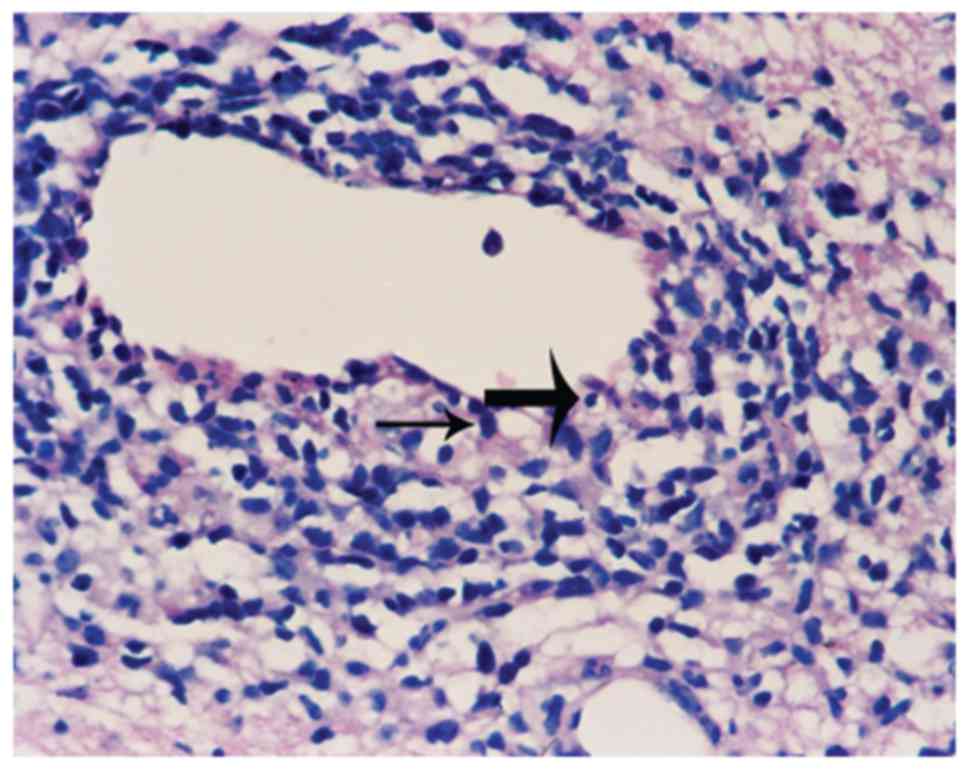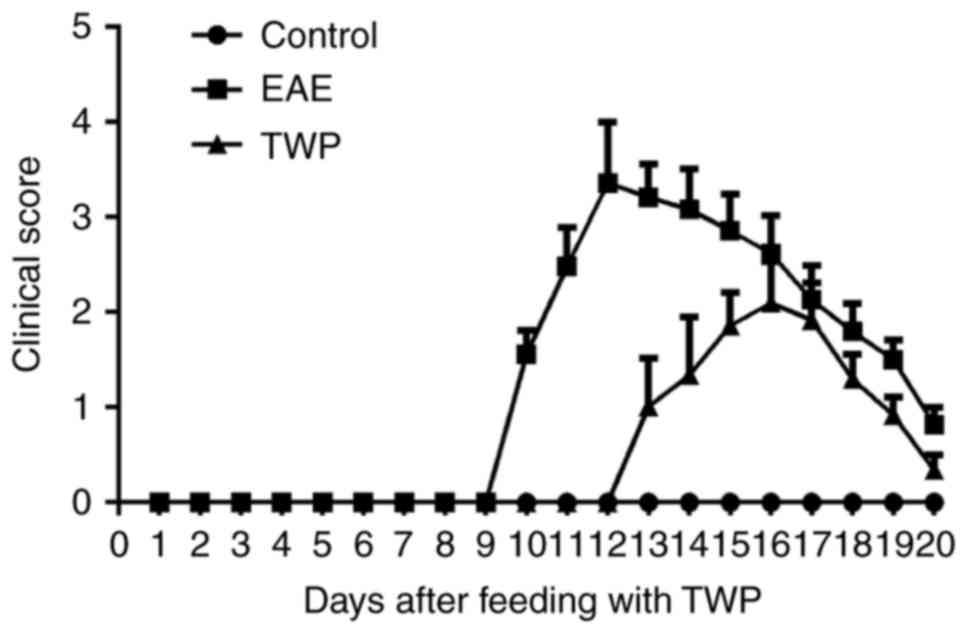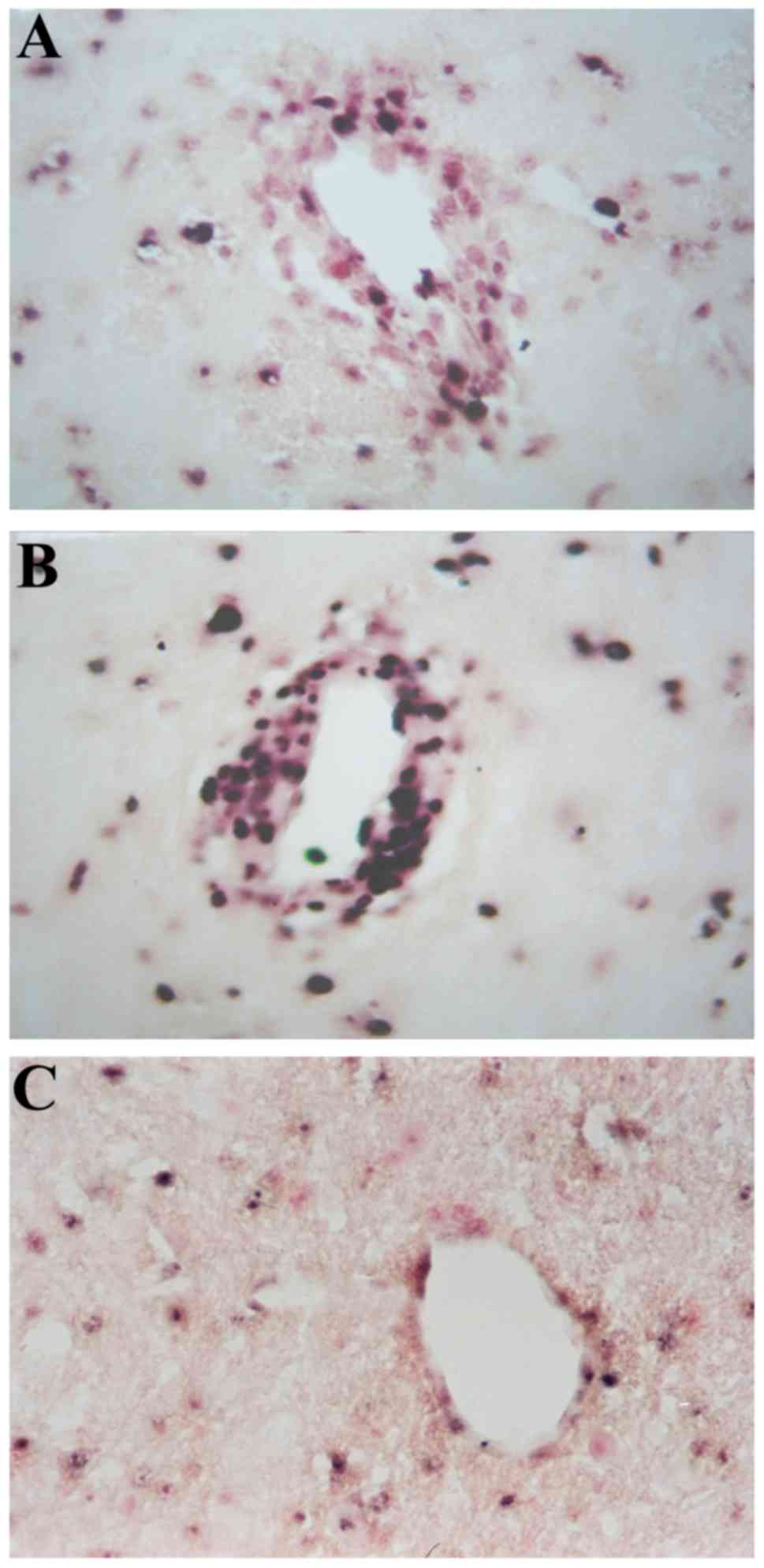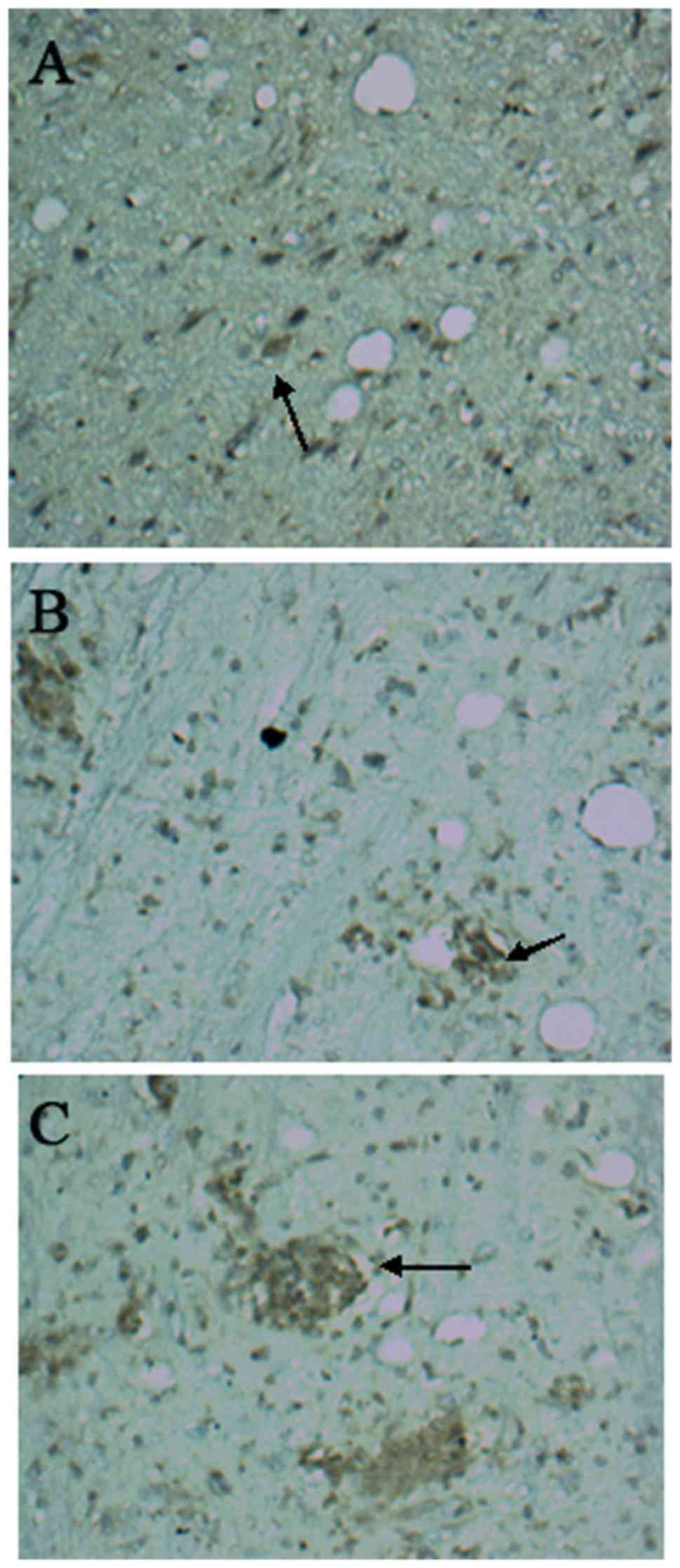|
1
|
Diab A, Deng C, Smith JD, Hussain RZ,
Phanavanh B, Lovett-Racke AE, Drew PD and Racke MK: Peroxisome
proliferator-activated receptor-gamma agonist
15-deoxy-Delta(12,14)-prostaglandin J(2) ameliorates experimental
autoimmune encephalomyelitis. J Immunol. 168:2508–2515. 2002.
View Article : Google Scholar : PubMed/NCBI
|
|
2
|
Magnus T, Chan A, Linker RA, Toyka KV and
Gold R: Astrocytes are less efficient in the removal of apoptotic
lymphocytes than microglia cells: Implications for the role of
glial cells in the inflamed central nervous system. J Neuropathol
Exp Neurol. 61:760–766. 2002. View Article : Google Scholar : PubMed/NCBI
|
|
3
|
Hao L, Pan MS, Zheng Y and Wang RF: Effect
of cordyceps sinensis and Tripterygium wilfordii polyglycosidium on
podocytes in rats with diabetic nephropathy. Exp Ther Med.
7:1465–1470. 2014.PubMed/NCBI
|
|
4
|
Zhu J, Cui K, Kou J, Wang S, Xu Y, Ding Z,
Han R and Qin Z: Naja naja atra venom protects against
manifestations of systemic lupus erythematosus in MRL/lpr mice.
Evid Based Complement Alternat Med. 2014:9694822014. View Article : Google Scholar : PubMed/NCBI
|
|
5
|
Ho LJ, Chang DM, Chang ML, Kuo SY and Lai
JH: Mechanism of immunosuppression of the antirheumatic herb TWHf
in human T cells. J Rheumatol. 26:14–24. 1999.PubMed/NCBI
|
|
6
|
Seger J, Zorzella-Pezavento SF, Pelizon
AC, Martins DR, Domingues A and Sartori A: Decreased production of
TNF-alpha by lymph node cells indicates experimental autoimmune
encephalomyelitis remission in Lewis rats. Mem Inst Oswaldo Cruz.
105:263–268. 2010. View Article : Google Scholar : PubMed/NCBI
|
|
7
|
Steen K, Narang P and Lippmann S:
Electroconvulsive therapy in multiple sclerosis. Innov Clin
Neurosci. 12:28–30. 2015.PubMed/NCBI
|
|
8
|
Halmer R, Davies L, Liu Y, Fassbender K
and Walter S: The innate immune receptor CD14 mediates lymphocyte
migration in EAE. Cell Physiol Biochem. 37:269–275. 2015.
View Article : Google Scholar : PubMed/NCBI
|
|
9
|
Fisher JD, Acharya AP and Little SR: Micro
and nanoparticle drug delivery systems for preventing
allotransplant rejection. Clin Immunol. 160:24–35. 2015. View Article : Google Scholar : PubMed/NCBI
|
|
10
|
Kodela R, Nath N, Chattopadhyay M, Nesbitt
DE, Velázquez-Martinez CA and Kashfi K: Hydrogen sulfide-releasing
naproxen suppresses colon cancer cell growth and inhibits NF-κB
signaling. Drug Des Devel Ther. 9:4873–4882. 2015.PubMed/NCBI
|
|
11
|
Nakajima S, Chi Y, Gao K, Kono K and Yao
J: eIF2α-independent inhibition of TNF-α-triggered NF-κB activation
by salubrinal. Biol Pharm Bull. 38:1368–1374. 2015. View Article : Google Scholar : PubMed/NCBI
|
|
12
|
Ni L, Zhou X, Ma J, Zhang XM, Li CJ, Li L,
Yang DJ, Shao YY, Zhou SB, Zhang TT and Zhang DM: Wilfordonols A-D:
Four new norsesquiterpenes from the leaves of Tripterygium
wilfordii. J Asian Nat Prod Res. 17:615–624. 2015. View Article : Google Scholar : PubMed/NCBI
|
|
13
|
Schmied M, Breitschopf H, Gold R, Zischler
H, Rothe G, Wekerle H and Lassmann H: Apoptosis of T lymphocytes in
experimental autoimmune encephalomyelitis. Evidence for programmed
cell death as a mechanism to control inflammation in the brain. Am
J Pathol. 143:446–452. 1993.
|
|
14
|
Lai JH, Ho LJ, Lu KC, Chang DM, Shaio MF
and Han SH: Western and Chinese antirheumatic drug-induced T cell
apoptotic DNA damage uses different caspase cascades and is
independent of Fas/Fas ligand interaction. J Immunol.
166:6914–6924. 2001. View Article : Google Scholar : PubMed/NCBI
|
|
15
|
Suvannavejh GC, Dal Canto MC, Matis LA and
Miller SD: Fas-mediated apoptosis in clinical remissions of
relapsing experimental autoimmune encephalomyelitis. J Clin Invest.
105:223–231. 2000. View
Article : Google Scholar : PubMed/NCBI
|
|
16
|
Zhu B, Luo L, Chen Y, Paty DW and Cynader
MS: Intrathecal Fas ligand infusion strengthens immunoprivilege of
central nervous system and suppresses experimental autoimmune
encephalomyelitis. J Immunol. 169:1561–1569. 2002. View Article : Google Scholar : PubMed/NCBI
|
|
17
|
McCombe PA, Nickson I, Tabi Z and Pender
MP: Apoptosis of V beta 8.2+ T lymphocytes in the spinal
cord during recovery from experimental autoimmune encephalomyelitis
induced in Lewis rats by inoculation with myelin basic protein. J
Neurol Sci. 139:1–6. 1996. View Article : Google Scholar : PubMed/NCBI
|
|
18
|
Behan PO and Chaudhuri A: EAE is not a
useful model for demyelinating disease. Mult Scler Relat Disord.
3:565–574. 2014. View Article : Google Scholar : PubMed/NCBI
|
|
19
|
D'Acquisto F, May MJ and Ghosh S:
Inhibition of nuclear factor kappa B (NF-B): An emerging theme in
anti-inflammatory therapies. Mol Interv. 2:22–35. 2002. View Article : Google Scholar : PubMed/NCBI
|
|
20
|
He JK, Yu SD, Zhu HJ, Wu JC and Qin ZH:
Triptolide inhibits NF-kappaB activation and reduces injury of
donor lung induced by ischemia/reperfusion. Acta Pharmacol Sin.
28:1919–1923. 2007. View Article : Google Scholar : PubMed/NCBI
|
|
21
|
Noor NA, Fahmy HM, Mohammed FF, Elsayed AA
and Radwan NM: Nigella sativa amliorates inflammation and
demyelination in the experimental autoimmune
encephalomyelitis-induced Wistar rats. Int J Clin Exp Pathol.
8:6269–6286. 2015.PubMed/NCBI
|













